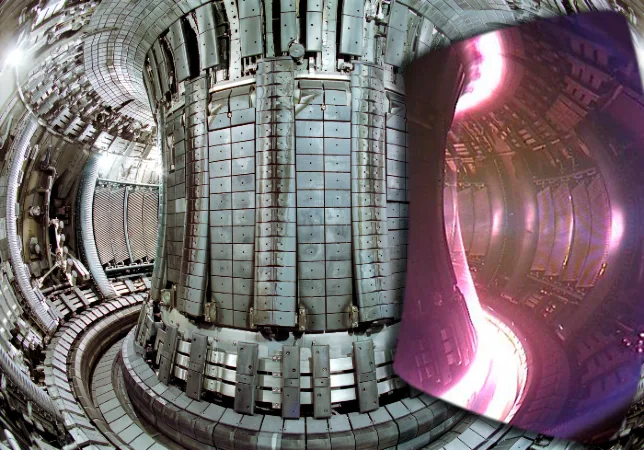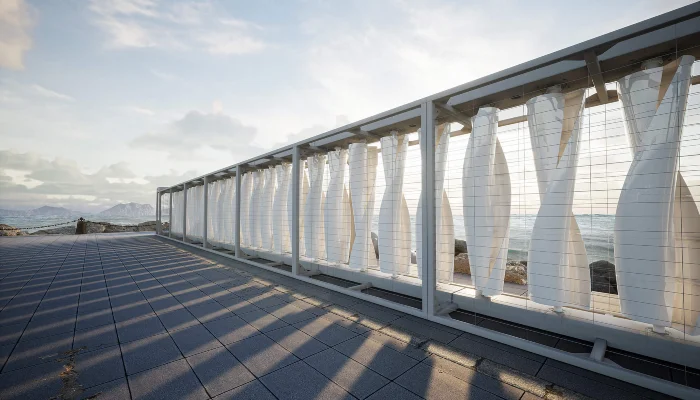In a move that’s both an end and a beginning, scientists are bidding farewell to one of the nuclear fusion world’s giants. After four decades of groundbreaking work, the Joint European Torus (JET), nestled near Oxford in the United Kingdom, is being retired. But this isn’t just about shutting down; it’s about learning and paving the way for what comes next.
The 17-year journey to dismantle JET will be scrutinized in extraordinary detail. Why? Because the insights gleaned here will shape the future of fusion power plants, guiding them toward safety and economic feasibility.
The Sunset of a Fusion Pioneer: Lessons for the Future of Clean Energy
“We are starting to think seriously about a fusion power plant,” Rob Buckingham, the UK Atomic Energy Authority’s (UKAEA) lead on decommissioning for JET, remarked, underscoring a pivotal shift in focus. It’s not just about building a reactor anymore. It’s about envisioning its entire life cycle – from cradle to grave.
The quest at the heart of all this? Mimicking the Sun’s power on Earth. Fusion, the process of merging atoms, could revolutionize our world, offering a nearly inexhaustible well of clean energy. But here’s the catch: the engineering behind making fusion work in a power plant is uncharted territory. We’re talking about a technology that’s still decades away from being commercially viable.
Yet, there’s a palpable buzz in the scientific community. The drive to design the first commercial fusion reactors is gaining momentum, fueled by recent breakthroughs. In 2022, JET set a new record for the energy output achieved through nuclear fusion. Meanwhile, across the pond, the US National Ignition Facility (NIF) in Livermore, California, is making waves of its own.
This flagship US fusion facility has begun consistently producing more energy from fusion reactions than what’s fed into them. Granted, these calculations don’t factor in the full energy needs of running such a facility. For fusion plants to truly reach a ‘break-even’ point, they’d have to surpass these energy inputs significantly. Nevertheless, physicists are celebrating these milestones, seeing them as harbingers of a future where clean and abundant energy could be a reality.
As JET’s decommissioning marks the end of an era, it also heralds the beginning of a new chapter in our pursuit of harnessing the power of the stars. This isn’t just a shutdown; it’s a steppingstone to a future where clean energy could light up our world.

Legacy of JET: A Pathway to ITER and the Future of Fusion Energy
JET’s significance extends far beyond its physical presence in the UK. It has been a crucial steppingstone toward the construction of ITER, an ambitious $22 billion fusion reactor project in France. Set to potentially revolutionize energy production by the 2030s, ITER’s design and operational plans have been heavily influenced by JET’s findings. From selecting materials to determining the ideal fuel, JET has been instrumental in shaping ITER’s trajectory, providing invaluable insights into the behavior of large-scale fusion experiments.
But the path of progress isn’t without its challenges, and the decommissioning of JET brings its own set of complexities, particularly in handling its radioactive components. Fusion, unlike nuclear fission used in current nuclear reactors, doesn’t produce long-lived radioactive waste. This is one of its most touted advantages. However, JET is unique in its extensive use of tritium, a radioactive hydrogen isotope. This substance, pivotal for future fusion reactors including ITER, poses a notable challenge due to its 12.3-year half-life and the radiation it emits. The components exposed to tritium and the high-energy particles from fusion can remain radioactive for several decades.
Decommissioning JET, however, isn’t about demolition and exclusion zones. Anne White, a plasma physicist at MIT, emphasizes a more nuanced approach. The focus isn’t on destruction but on the careful reuse and recycling of parts. This includes the meticulous removal of tritium, which not only reduces radioactivity but also recycles this valuable resource. Rob Buckingham of UKAEA frequently points out the practical economic sense in sustainably recycling tritium. It’s cheaper, greener, and proves the project’s commitment to environmental and economic responsibility.
This phase of JET’s lifecycle offers a template for future fusion experiments: a blueprint for safe decommissioning, resource recycling, and sustainable management of radioactive materials. As ITER inches closer to realization, the lessons learned from JET’s decommissioning will be vital in ensuring the safe, efficient, and environmentally conscious development of fusion energy.

The Challenges of Decommissioning JET's 'Tokamak' Reactor
The Joint European Torus (JET), a trailblazer in nuclear fusion research, is more than just a reactor; it’s a forerunner in a series of revolutionary tokamak reactors. This unique design, shared with the upcoming ITER project, involves confining gas within a doughnut-shaped cavity. Here, a plasma of hydrogen isotopes is heated to temperatures eclipsing the Sun, creating the conditions necessary for nuclei to fuse. This process is at the heart of JET’s ground-breaking experiments and is a critical step towards making fusion energy a reality.
The decommissioning of JET marks a significant moment in fusion research, not least because the last time the fusion community undertook a similar task was in 1997 with the Tokamak Fusion Test Reactor in New Jersey. That experience saw the innovative reuse of many components and the site itself, although the reactor had to be filled with concrete, disassembled, and buried. This time, JET’s team hopes to minimize waste significantly, setting a new standard for decommissioning fusion reactors.
The main obstacle in this process, as Rob Buckingham outlines, is managing the tritium.
This involves meticulously removing this gas – which permeates all materials – from various reactor components, including the metal tiles lining the tokamak’s interior. To achieve this, JET engineers are leveraging advanced technologies, including a refurbished robotic system for removing and analyzing sample tiles and remote-operated lasers to measure tritium levels. Their goal isn’t only to detritiate the reactor, but also to establish a blueprint for handling large-scale, industrial processes involved in fusion reactor decommissioning.
This year, the JET team will embark on an ambitious project to recover and analyze 60 wall tiles, setting the stage for the eventual handling of over 4,000 components. Buckingham’s vision is clear: to transition from lab-scale research to industrial-scale processes, managing the detritiation of the many tonnes of tiles and components that will be removed from JET in the coming years. This effort isn’t just about safely decommissioning a reactor; it’s about shaping the future of sustainable fusion energy production.
“Analysis of the damage, after the machine is opened up, will provide useful data to test the detailed predictions,” says Joelle Mailloux.
As the JET Scientific Programme Leader, Joelle Mailloux, recorded a final round-up for the deuterium-tritium experiments at JET, also known as DTE3 before the decommissioning phase began a month ago. The video below is the final video from the JET project that began in 1983.
More To Discover
- Bottom Trawling Unleashes 370 Million Tons of Hidden Carbon Emissions, Study Reveals
- Crypto Mining’s Huge Energy Bite: 2% of US Power With No Local Benefits
- Amazon-Backed Ambient Photonics Debuts 3X More Powerful Indoor Low-Light Solar Cells
- The Zero-Energy Ultrathin Film That Can Protect Crops and Slash Food Waste
JET's Final Act: Setting the Standard for Future Fusion Reactor Safety and Sustainability
As the Joint European Torus (JET) approaches its final chapter, the focus shifts to the groundbreaking task of detritiation, a crucial step in ensuring the safe decommissioning of fusion reactors. Detritiation involves extracting tritium, a key component in fusion reactions, from various materials used in the reactor. Engineers have devised an innovative process where components are heated in a furnace, releasing tritium, which is then captured in water.
This reclaimed tritium can be recycled back into fuel, turning a potential waste product into a valuable resource. The residual materials are classified as low-level waste, like the radioactive waste produced by universities and hospitals. JET’s approach to managing this waste, including variations for treating different materials like resins and plastics, sets a precedent for future fusion projects.
The disposal of low-level and intermediate-level radioactive waste is another critical aspect of JET’s decommissioning process. Researchers are evaluating various methods, including re-treating the waste, relocating it to specialized disposal sites, or storing it until its radioactivity diminishes. This careful and responsible handling of radioactive materials exemplifies the commitment to safety and environmental stewardship in fusion research.
Moreover, JET’s legacy extends beyond its physical components. Parts of the reactor, unaffected by radioactivity, like diagnostic and test equipment, have found new homes in fusion experiments across France, Italy, and Canada. This repurposing underlines the collaborative spirit of the international fusion research community.
JET’s final experiments, conducted in December, were a fitting climax to its storied history. Researchers experimented with inverting the plasma’s shape to improve heat confinement, and conducted tests that involved directing a high-energy beam of ‘runaway’ electrons at the reactor’s inner wall. This intentional damage wasn’t an act of recklessness, but a deliberate strategy to gather valuable data.
Joelle Mailloux points out that analyzing this damage will provide crucial insights to validate detailed predictions, further contributing to the understanding of plasma behavior and reactor safety in fusion experiments.
As JET concludes its remarkable journey, it leaves behind a legacy of innovation, collaboration, and invaluable contributions to the field of nuclear fusion. Its pioneering efforts in detritiation, waste management, and experimental research will continue to influence and guide future fusion projects, bringing us closer to realizing the dream of sustainable, clean energy.





















